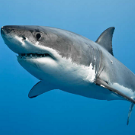Thai airline flight makes emergency landing in Phuket
-
Recently Browsing 0 members
- No registered users viewing this page.
-
Topics
-
-
Popular Contributors
-
-
Latest posts...
-
7
Zarah Sultana says she is quitting Labour to start party with Corbyn
There is already a thread running on this topic: -
105
Leftists continue to be wrong and still have the nerve to keep making predictions
I have time to waste, even though we all know its either hatespew or just a based faced lie. Finished it for you -
128
Things thai people do that make no sense
That's true. And I was recently told that all these 'polite nothings' (like when an American buying a coke at 7/11 says 5 or 10 times 'thank you') were not the norm in my home-country either, about 100 years ago. -
105
Leftists continue to be wrong and still have the nerve to keep making predictions
Please set forth where Fox News has been wrong since the Dominion settlement? Please set forth what Fox does to stoke division? Do you disavow the anarchist foot soldiers of the Democratic party shooting at ICE? Stoking division? Do you publicly disavow internet calls for Trump supporters to die? Do you give them a thumbs down? But, I will see a bunch below. -
34
Traffic Phuket Family of 7 on Bike Sparks Safety Outrage
Could be, but knowing Thais they probably could have walked to where they went. but they'd rather risk the lives of their kids than ever walk somewhere. -
14
Best Shop to buy Fridge, Laundry Machine, Microwave etc in UdonThani or Nongkhai.
I shop around and compare prices first. Over the last 10 years, I have bought an AC, fridge and TV from Big C. A second fridge, microwave and TV from Lotus and a freezer from Macro. I've also bought numerous other small household appliances from the aforementioned, plus Thai Watsudu and other shops. I guess I'm lucky to have never had a warranty service claim.
-
-
Popular in The Pub












Recommended Posts
Create an account or sign in to comment
You need to be a member in order to leave a comment
Create an account
Sign up for a new account in our community. It's easy!
Register a new accountSign in
Already have an account? Sign in here.
Sign In Now